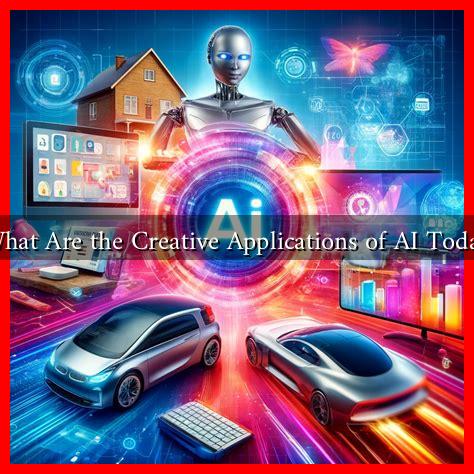-
Table of Contents
What Are the Creative Applications of AI Today
Artificial Intelligence (AI) has transcended its initial role as a mere computational tool, evolving into a powerful ally in various creative fields. From art and music to writing and design, AI is reshaping how we conceive and produce creative works. This article explores the diverse applications of AI in creative industries, highlighting its potential, challenges, and future prospects.
The Intersection of AI and Art
AI has made significant inroads into the art world, enabling artists to explore new mediums and techniques. One of the most notable examples is the use of Generative Adversarial Networks (GANs), which can create stunning visual art by learning from existing artworks.
- DeepArt: This platform uses AI to transform photos into artworks in the style of famous painters. Users can upload their images and select a style, resulting in unique pieces that blend personal photography with classic art.
- Obvious: A French art collective that gained fame for selling an AI-generated portrait, “Edmond de Belamy,” at auction for $432,500. This event sparked discussions about authorship and the value of AI-generated art.
These examples illustrate how AI can serve as a collaborator, pushing the boundaries of traditional art forms and inviting new interpretations of creativity.
AI in Music Composition
The music industry is also experiencing a transformation due to AI technologies. AI algorithms can analyze vast amounts of music data to create original compositions or assist musicians in their creative processes.
- AIVA: An AI composer that creates music for films, video games, and commercials. AIVA has been used to score various projects, showcasing its ability to produce emotionally resonant music.
- Amper Music: This platform allows users to create custom music tracks by selecting mood, style, and length. It empowers content creators to generate high-quality music without needing extensive musical knowledge.
These innovations not only enhance the creative process but also democratize music production, making it accessible to a broader audience.
AI in Writing and Content Creation
AI’s impact on writing is profound, with tools that assist in generating content, editing, and even creating entire narratives. Natural Language Processing (NLP) technologies have enabled machines to understand and produce human-like text.
- OpenAI’s GPT-3: This language model can generate coherent and contextually relevant text, making it useful for various applications, from blog posts to poetry. Its versatility has led to its adoption by writers and marketers alike.
- Grammarly: An AI-powered writing assistant that not only checks grammar but also offers style suggestions, helping writers improve their work in real-time.
These tools exemplify how AI can enhance the writing process, allowing creators to focus on their ideas while automating mundane tasks.
AI in Design and Visual Media
In the realm of design, AI is revolutionizing how graphics, logos, and user interfaces are created. AI-driven design tools can analyze user preferences and trends to generate tailored designs.
- Canva: This graphic design platform incorporates AI to suggest layouts and design elements based on user input, streamlining the design process for non-designers.
- Runway ML: A creative suite that uses AI for video editing, allowing users to manipulate footage in innovative ways, such as changing backgrounds or applying effects with simple commands.
These advancements not only enhance creativity but also improve efficiency, enabling designers to produce high-quality work in less time.
Challenges and Ethical Considerations
Despite the exciting possibilities, the integration of AI in creative fields raises several challenges and ethical questions. Issues such as copyright, authorship, and the potential for job displacement are at the forefront of discussions surrounding AI in creativity.
- Copyright Concerns: Who owns the rights to AI-generated works? This question remains largely unanswered, leading to legal ambiguities.
- Job Displacement: As AI tools become more capable, there is concern about the potential loss of jobs in creative industries.
Addressing these challenges will be crucial for the sustainable integration of AI in creative fields.
Conclusion
AI is undeniably transforming the landscape of creativity across various domains. From generating art and music to assisting in writing and design, AI serves as a powerful tool that enhances human creativity. However, as we embrace these innovations, it is essential to navigate the accompanying challenges thoughtfully. By fostering a collaborative relationship between humans and AI, we can unlock new creative potentials while addressing ethical considerations. The future of creativity with AI is not just about machines creating art; it’s about humans and machines working together to push the boundaries of what is possible.
For more insights on AI and its applications, you can visit Forbes.

